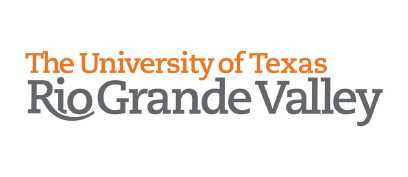McALLEN — New research based in the Rio Grande Valley focused on a new approach to tackling childhood obesity is about to kick off through a $1.4 million federal grant awarded to the University of Texas Rio Grande Valley.
The newly created South Texas Early Prevention Study-Pre-K, or STEPS, will look for better ways to not only teach the youngest students healthy eating and exercising habits at school, but also find better ways to involve parents, teachers and staff in the process. It is being administered by UTRGV’s Department of Health and Human Performance in the College of Health Affairs.
“ We live in an area that is very sedentary and chronic illness is rampant,” said Zasha Romero, assistant professor and outreach designee for the study. “Around 5 to 7 years of age the fat cells in the body start developing, so when children are younger and are starting to develop obesity and sedentary lifestyles, their fat cells start developing sooner. … Whenever they get to their normal age of fat cell reproduction, that’s when it becomes a problem.”
The three-year grant, awarded by the U.S. Department of Health and Human Services, will be used to develop and implement the program at two partner school districts — La Joya and Pharr-San Juan-Alamo. It will then follow the initial cohort of participants along a three-year span in hopes of drawing better data and conclusions.
The two districts were selected based on their similar size and demographics, Romero explained, as they needed districts large enough to have 14 randomly selected schools at each district, out of which seven will receive the “treatment” and seven will not.
The treatment will include applying the Texas Education Agency-approved Bienestar curriculum, a bilingual pre-K through eight grade health program developed by The Social & Health Research Center in San Antonio.
“The teachers are going to be teaching this curriculum as part of their school lessons. The physical education educator has another curriculum to teach on top of fitness,” Romero said. “Not only that, but there is a parental component. We are going to bring the parents in, give some lessons and provide the curriculum. … Then we have the university and here we are going to utilize our health and kinesiology students to actually go out to the schools.”
The school districts are required to include an approved health program of their choice, but Sulema Solis, director of health services at PSJA school district, said this particular curriculum could have greater impact in the area considering it encompasses both dominant languages – Spanish and English. Also, the curriculum incorporates healthy options for regional foods that both students and parents can get behind.
“Bienestar is something we had been looking at for a while because it’s relatable here with our community,” Solis said. “It’s very culture sensitive… it’s more Latino-based. It refers to foods that are eaten more prevalently here in the area and different ways of preparing those meals, like the tamales and tacos.”
PSJA’s McKeever Elementary School piloted the program with over 100 students. School and university officials implemented the curriculum for about three months and collected measurements and data from both students and parents.
“They weren’t throwing out the food that they normally do; before that we would see that before they even tried certain foods they would throw it in the trash,” Solis said. “We also heard from the parents that they were asking them to purchase healthier foods.”
Part of the gathering data aspect will be to keep track of what the students actually eat during lunch and what foods they are throwing away during the process. Communication and feedback from the parents of the children’s behavior will also be an important aspect.
Families will be asked to volunteer for the research, so the university is also in talks with local organizations such as La Union del Pueblo Entero and the Valley Initiative for Development and Advancement, about the program and to spread their message that the information for the project will not being used for purposes other than health research.
Researchers and school officials will continue fleshing out the program throughout the spring in order to have every piece in place by the fall 2018 and to begin notifying families. Even though this is only a three-year grant project, Romero said the UTRGV team is already looking into applying for other grants in order follow these children for longer to see if the healthy habits will take root long-term.
Even if the topic of childhood obesity can be a bit cliché, Romero said the point is that the issue is still prevalent in the area and no solution has been found.
“We know that there are many initiatives here in the Rio Grande Valley and all or most of these are effective to a certain degree,” he said. “But here we are still. We are trying to find something that is going to encompass different aspects of support to give our students a better chance.”





